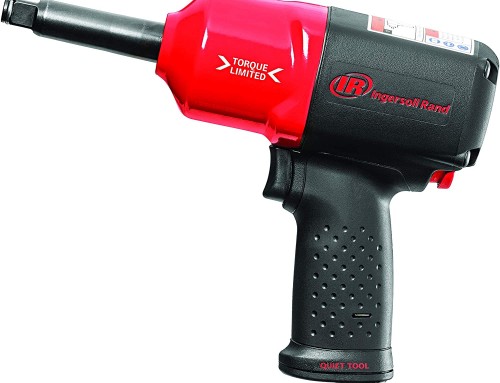The Role of Calibration in Aviation Maintenance: Ensuring Precision for Safety and Performance
Calibration is a critical process in the aviation industry, ensuring that all equipment used on aircraft functions accurately to maintain safety. From measuring the weight of an airplane to determining the airspeed or even as little as ensuring the right tire pressure, calibration plays a fundamental role in maintaining the safety and performance of an aircraft. Although there are a ton of different types of tools used in aircraft maintenance, this blog will explore the importance of calibration in cable tensiometers, tire pressure gauges, air data test sets, and aircraft scales. At Pylon, we are proud to help Canadian airlines like Air Canada, Pal, and Jazz take flight.
Cable Tensiometers: Ensuring Accurate Control Systems
Precision is top priority in an airplane, especially when it comes to the control systems that guide the plane. Cables are integral components in the operation of rudders and ailerons, which control the aircraft’s movements. These cables are under significant stress, and any change in their tension can lead to serious issues when attempting to control the flight. This is where cable tensiometers come in. These devices are essentially special clamps that are used to measure the tension in cables, ensuring that they are at the correct tension levels for proper functioning. Calibration of cable tensiometers is vital because even small inaccuracies in measurements could lead to malfunctioning control cables, which could potentially decrease flight safety. Routine calibration of these devices ensures that they provide reliable, accurate readings, which increases engineers’ and pilots’ confidence in the aircraft’s abilities.
 Tire Pressure Gauges: Vital for Safe Takeoff and Landing
Tire Pressure Gauges: Vital for Safe Takeoff and Landing
Tires might not be the first thing that comes to mind when thinking about aircraft performance, but they play a crucial role in ensuring safe landings and takeoffs. Each tire on the aircraft must be inflated to a very specific pressure, and any deviation from this pressure can have significant consequences. An accurate tire pressure gauge is essential to ensure that the tires are inflated correctly. Too high or too low pressure can lead to issues such as tire blowouts, poor braking, or difficulty with takeoff and landing.
Air Data Test Sets: Helps ensure the accuracy of the aircraft’s airspeed and altitude
When close to an airplane, you can usually see little tubes that stick out from the sides of the front. Those tubes are called “Pitot Tubes” and even though they are tiny, they are also mighty. These instruments are crucial in aviation, as they measure an aircraft’s airspeed and altitude by capturing the dynamic pressure of the air flowing into the tube during flight. Accurate measurements from the pitot tube are essential for ensuring that the pilot can make informed decisions about the aircraft’s performance, especially at high altitudes where air pressure and speed are critical for navigation and control. Air data test sets are used to test the accuracy of pitot tubes, ensuring that they provide the correct readings. Calibration of air data test sets is key to confirming that the pitot tube is functioning as expected and providing accurate data to the flight crew. Any errors in this data could lead to incorrect speed or altitude readings, putting the aircraft in danger. Regular calibration ensures that the pitot tubes maintain the necessary precision for safe flight operations.
Aircraft Scales: Determining Weight and Balance for Safety
One of the most crucial aspects of the safety of an airplane is ensuring that its weight and balance are within specified limits. An aircraft that is too heavy or poorly balanced can experience issues with takeoff, flight stability, and landing. Aircraft scales are used to determine the exact weight of a plane, and accurate measurements are used to ensure that the aircraft’s weight distribution is within safe limits. Calibration of these scales is a vital part of the maintenance process. Without accurate scales, there’s a risk of incorrect calculations for fuel loads, cargo weight, or passenger load, which can result in dangerous situations during flight. By ensuring that the scales are calibrated correctly, technicians can determine the precise weight and balance, keeping the aircraft within safe operational parameters.
Why Calibration Matters
The main reason calibration is so essential in aviation is to ensure the safety and reliability of the aircraft, and believe it or not, the smallest error in calibration can have serious consequences. Regular calibration not only supports safety but also ensures that the aircraft operates at its highest level of efficiency. Proper calibration can help prevent costly maintenance issues, improve the longevity of aircraft components, and reduce the risk of failures during flight.
Conclusion
Calibration is an essential piece of the puzzle in aviation maintenance, and its role should not be overlooked. From cable tensiometers to tire pressure gauges, air data test sets, and aircraft scales, each of these instruments ensures that aircrafts can perform safely and efficiently. Calibration ensures that these devices operate with the utmost precision possible, which is vital for the safety of passengers, crew, and the aircraft itself. In an industry where every detail counts, regular checks, recalibration, and maintenance will help ensure that you cover all your bases and that aviation remains a safe mode of transportation.





